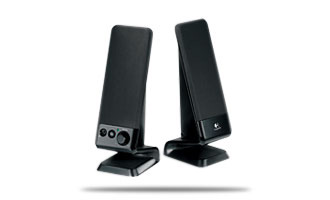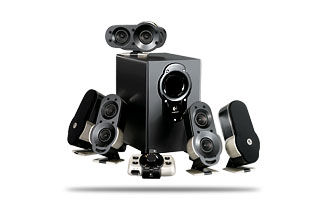Introduction
 If you are looking to buy a new desktop PC for gaming purposes, you’d surely want to get a good set of speakers to go with it. That's when you get confronted by "the choice"? Should you splurge on a full 5.1 speaker system or should you just get the cheaper but less impressive 2.1 speaker system?
If you are looking to buy a new desktop PC for gaming purposes, you’d surely want to get a good set of speakers to go with it. That's when you get confronted by "the choice"? Should you splurge on a full 5.1 speaker system or should you just get the cheaper but less impressive 2.1 speaker system?
The 5.1 speaker system consists of two front speakers, two rear speakers, a center speaker and a subwoofer. That's six pieces of hardware right there. The 2.1 speaker system, on the other hand, consists only of two front speakers and a subwoofer. Hardly impressive, but certainly a lot cheaper.
As far as audio supports goes, most motherboards already have 5.1 audio support built-in, so that is not an issue at all. Most PC games also support full surround sound with 5.1 channel support. The only question is whether a 5.1 speaker system will really improve your gaming experience. Read on and find out!
Sound Positioning
Many First Person Shooter (FPS) games like F.E.A.R have good support for surround sound systems. The latest codecs are supported… But let’s take a look at this scenario of a FPS gameplay :
You are soldier walking through a desert on a reconnaissance mission. After a short while, an enemy discovers your position and fires at you.
On a 2-channel speaker system, you hear the shot coming from your right speaker. However, you don't see anyone on the right side of the screen. Your mind then unconsciously informs you that the shot is coming from your rear right direction. You turn around to face that direction and you see that the enemy is exactly where you thought he would be.
On a 5.1-channel speaker system, you hear the shot coming from your rear right speaker. You turn around to face that direction and you see that the enemy is exactly where you thought he would be.
Next, let’s take a look at this scenario of a racing game :
You are playing an F1 simulator racing game. You managed to overtake your rivals and you are now at pole position. A rival car starts to close in on you.
On a 2-channel speaker system, you can see that there is no car in front of you. Your mind instinctively tells you that the other car must be coming from the back. Based on the difference in loudness between the two speakers, you will know which direction the car is at and how close he is to you.
On a 5.1-channel speaker system, the engine noise from the other car will be heard from your rear speakers. It will help you block the car from overtaking you.
In both scenarios, the result is the same, no matter whether you have a full 5.1 audio system, or just a 2.1 speaker system. Although having more speakers may provide you with more accurate audio positioning information, most gamers will have no problem pinpointing the direction of any sound with fewer speakers. This is even less of an issue with some types of games, like RTS (real-time strategy) games, where audio positioning is not even important.
With that said, a 5.1 surround sound system can not only help improve sound positioning, it can also create a more immersive and realistic sound environment. For example, in a battle game like Ghost Recon : Advance Warfighter 2, you can hear gunshots, the ripping sound of anti-aircraft cannon fire, tank shell explosions, footsteps and vehicle engines all around you. In Unreal Tournament 2004, the sounds of rockets whizzing pass you from your rear left to your front right not only tells you where your opponent is, it really adds to the realism of the game. In these respects, nothing beats physical rear speakers.
Space Constraints
 The biggest drawback of a 5.1 speaker system is the space it takes and the inconvenience of setting it up. Many people who purchase a 5.1 speaker system don’t realize what they are getting themselves into.
The biggest drawback of a 5.1 speaker system is the space it takes and the inconvenience of setting it up. Many people who purchase a 5.1 speaker system don’t realize what they are getting themselves into.
First of all, the center speaker was certainly not created for easy integration with a PC. You can't place it between your keyboard and your monitor because it would be too tall and would not only block part of the monitor but also require the monitor to be further back than most people would be comfortable with. If you have a CRT monitor, you can place it at the top the monitor. But with super-slim LCD monitors the norm in most homes, you will end up placing it right next to the monitor.
Your rear speakers are also difficult to place strategically. You need to site them at some distance from you, on speaker stands for best effect. So, small rooms would not be suitable. Not only will it be difficult to site these speakers, the echo from nearby walls can negate their effect.







 Add to Reddit
Add to Reddit
